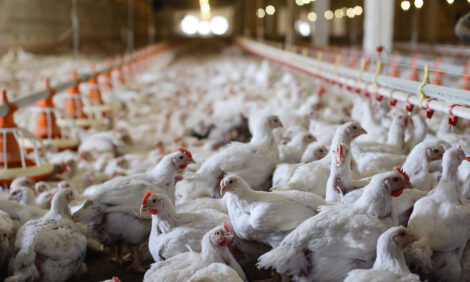



Genetic Parameters of Egg Defects and Egg Quality in Layer Chickens
In a collaborative trial involving researchers from Poland, the US and the UK - including two genetic companies - it was was found that genetic correlations among egg defect traits that were related to shell quality were positive and moderate to strong, suggesting that they could be grouped into one category for selection purposes. High-producing hens had a lower frequency of egg defects.Genetic parameters were estimated for egg defects, egg production and egg quality traits and reported in a paper in Poultry Science by A. Wolc of Poznan University of Life Sciences in Poland and co-authors at Iowa State University, Hy-Line International, Aviagen Ltd and the University of Edinburgh.
Eggs from 11,738 purebred brown-egg laying hens were classified as salable or as having one of the following defects: bloody, broken, calcium deposit, dirty, double yolk, misshapen, pee-wee, shell-less and soft-shelled.
Egg quality measures included albumen height, egg weight, yolk weight and puncture score. Body weight, age at sexual maturity and egg production were also recorded.
Heritability estimates of liability to defects using a threshold animal model were less than 0.1 for bloody and dirty; between 0.1 and 0.2 for pee-wee, broken, misshapen, soft shelled and shell-less; and above 0.2 for calcium deposit and double yolk.
Quality and production traits were more heritable, with estimates ranging from 0.29 (puncture score) to 0.74 (egg weight).
High-producing hens had a lower frequency of egg defects. High egg weight and bodyweight were associated with an increased frequency of double yolks and, to a lesser extent, with more shell quality defects.
Wolc and co-authors concluded that estimates of genetic correlations among defect traits that were related to shell quality were positive and moderate to strong (0.24 to 0.73), suggesting that these could be grouped into one category or selection could be based on the trait with the highest heritability or that is easiest to measure.
The authors added that selection against defective eggs would be more efficient by including egg defect traits in the selection criterion, along with egg production rate of salable eggs and egg quality traits.
Reference
Wolc A., J. Arango, P. Settar, N.P. O’Sullivan, V.E. Olori, I.M.S. White, W.G. Hill and J.C.M. Dekkers. 2012. Genetic parameters of egg defects and egg quality in layer chickens. Poult. Sci., 91(6):1292-1298. doi:10.3382/ps.2011-02130
Further ReadingYou can view the full report (fee payable) by clicking here. |
August 2012









